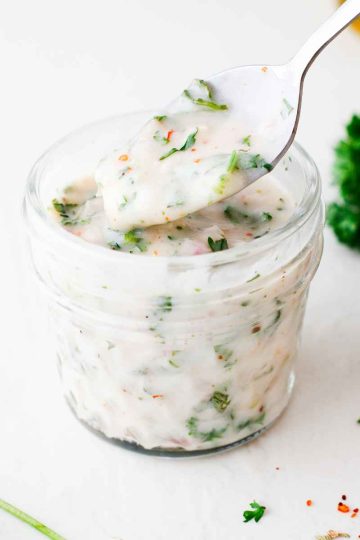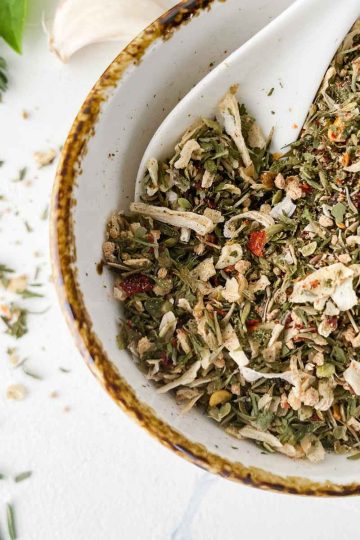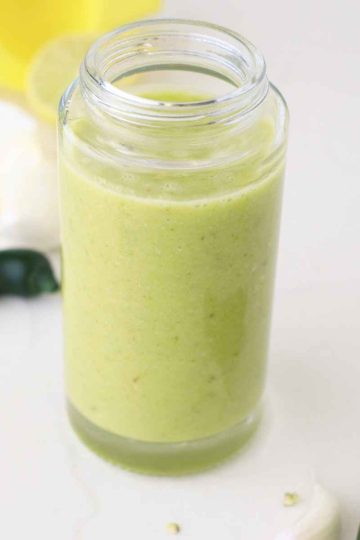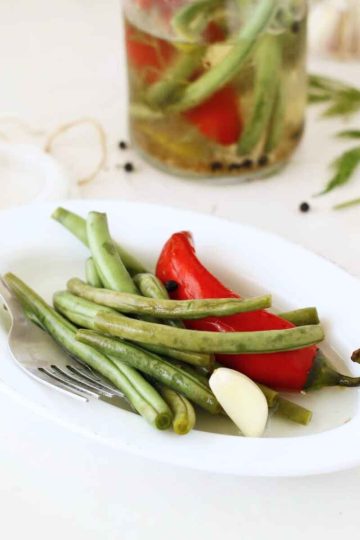Lightly fermented, crunchy and full of flavor, this beet Sauerkraut recipe is an absolute must try if you love making condiments from scratch.
Enjoy this as a side salad or team it up with your tacos, sandwiches and wraps for that bold flavor and a bit of crunch. This recipe is inspired by my quick pickled red cabbage recipe, which has been such a wild hit!

The earthiness of fresh beet is beautifully balanced by the crunchy sweetness of the cabbage in this probiotic rich sauerkraut that barely takes 15 minutes of kitchen time to make.
I've recently been trying quite a lot of pickled foods, and after the success of my pickled turmeric, quick pickled shallots and pickled shredded carrots, I just KNEW I had to try something more powerful- something that came packed with health benefits too.
Jump to:
What's So Great About the Recipe?
If you're one of those who don't like beet, this recipe is a must try. The flavor and texture is beautifully masked by the red cabbage and the other ingredients, and you'll actually end up loving the veggie.
And of course, it's perfect to use up any extra beet you may have too. I actually made this after I had a couple of beets leftover after making my roasted beet puree.
Recipe Ingredients

Beet: Organic red beet. You can use golden beet too, if that's what you have at hand.
Red cabbage: Pick an organic red cabbage aka purple cabbage. Make sure you remove any portions that are blemished or have soft spots.
Ginger: Fresh ginger, for that pungent kick. Traditional pickle recipes call for the use of garlic, but I used ginger this time after how delicious my ginger carrot pickle turned out.
Coriander seeds: I used whole coriander seeds here. You can use caraway seeds too.
Pink salt: Use sea salt if you can't find this. Avoid Kosher salt or table salt, especially for this recipe.
See recipe card for quantities.
Sea salt is a fundamental ingredient that is so flavorful, you can use less. One bag has 227 servings and lasts months. For centuries, chefs have enjoyed its taste and texture. Now you can try natural sea salt at home, and love it forever.
Substitutions & Variations
- For extra flavor, you can add fresh or dried dill, onion, garlic, apple, turmeric and black peppercorns to the mix too! I used black peppercorns when making my pickled Brussels sprouts and it turned out amazing!
- If you can't find purple cabbage, feel free to use green cabbage instead. The color from the beet will actually seep into the brine and the cabbage will absorb it nicely!
How to Make Beet Sauerkraut

Step 1: Use a grater or a sharp knife to thinly slice the veggies. I used a microplane to grate the ginger.

Step 2: Weigh the cabbage and beet in grams and multiply by 0.2. Measure out that amount of salt and add it to the mix, along with the coriander seeds.

Step 3: Use your hands to gently massage the salt into the cabbage and beet mixture.

Step 4: Let it sit out for an hour, stirring a couple of times, until the veggies release a lot of liquid.

Step 5: Transfer to a clean airtight jar and allow it to ferment at room temperature for at least 5 days before you refrigerate.
💭Top Tip
Make sure you 'burp' the jar every day. Open the lid for a minute to allow the gas from the fermentation to escape nicely before you put the lid back on again.
How to Store Beet and Cabbage Sauerkraut
Store the beet and cabbage Sauerkraut in the refrigerator after allowing it a few days to ferment. Make sure the container is clean, and you use a dry spoon to spoon it out every time you're using it.

16-ounce jars perfect for canning, pickling, preserving, and fermenting fruits and veggies. Embossed measurement markings ensure precise filling, and a label line lets you write dates and contents.
Tips & Tricks to Nail the Recipe
- The key to getting the perfect beet Sauerkraut is to have the perfect concentration of salt. Make sure you use a weighing scale to weigh the amount of salt correctly.
- Ensure all the veggies are fully submerged in the liquid. This will keep them from spoiling. This is true for almost all pickle recipes, including pickled radish and pickled cauliflower too.
- Avoid placing the jar of Sauerkraut in direct sunlight. It is best to leave it in a cool, dark place at room temperature to get it to ferment nicely.
- While it is fermenting, open the jar once every day to allow the built-up carbon dioxide to release.
How to Serve Beet Sauerkraut
This beet and cabbage Sauerkraut has a beautiful tangy flavor and a crunchy texture that perfectly contrasts any simple meal. You can serve it as a salad or a side, or even add it to your sandwiches, wraps, tacos and burgers as a condiment.
I love adding it to my chickpea egg salad to lend it some extra flavor and deliciousness.

Recipe FAQs
You can allow the beet sauerkraut to ferment for anywhere between 5 days to 4 weeks, and then refrigerate for up to 2 months.
Check for any signs of spoilage or discoloration of the veggies every few days. If the sauerkraut has gone bad, it'll start having a bad, off-putting odor and look slimy.
More Condiment Recipes
Looking for other recipes like this? Try these:
If you tried this beet sauerkraut recipe or any other recipe on my website, please leave a 🌟 star rating and let me know how it went in the 📝 comments below. Thanks for visiting!

Beet Sauerkraut
Ingredients
- 1 red cabbage
- 1 beet
- 1 teaspoon coriander seeds
- 2 teaspoon ginger
- Pink salt by weight
Instructions
- Use a grater or a sharp knife to thinly slice the veggies. I used a microplane to grate the ginger.
- Weigh the cabbage and beet in grams and multiply by 0.2. Measure out that amount of salt and add it to the mix, along with the coriander seeds.
- Use your hands to gently massage the salt into the cabbage and beet mixture.
- Let it sit out for an hour, stirring a couple of times, until the veggies release a lot of liquid.
- Transfer to a clean airtight jar and allow it to ferment at room temperature for at least 5 days before you refrigerate.
Notes
- The key to getting the perfect beet Sauerkraut is to have the perfect concentration of salt. Make sure you use a weighing scale to weigh the amount of salt correctly.
- Ensure all the veggies are fully submerged in the liquid. This will keep them from spoiling. This is true for almost all pickle recipes, including pickled radish and pickled cauliflower too.
- Avoid placing the jar of Sauerkraut in direct sunlight. It is best to leave it in a cool, dark place at room temperature to get it to ferment nicely.
- While it is fermenting, open the jar once every day to allow the built-up carbon dioxide to release.



![Wide Mouth Mason Jars 16 oz [5 Pack]](https://m.media-amazon.com/images/I/418qy+VyK7L._SL500_.jpg)








Leave a Reply